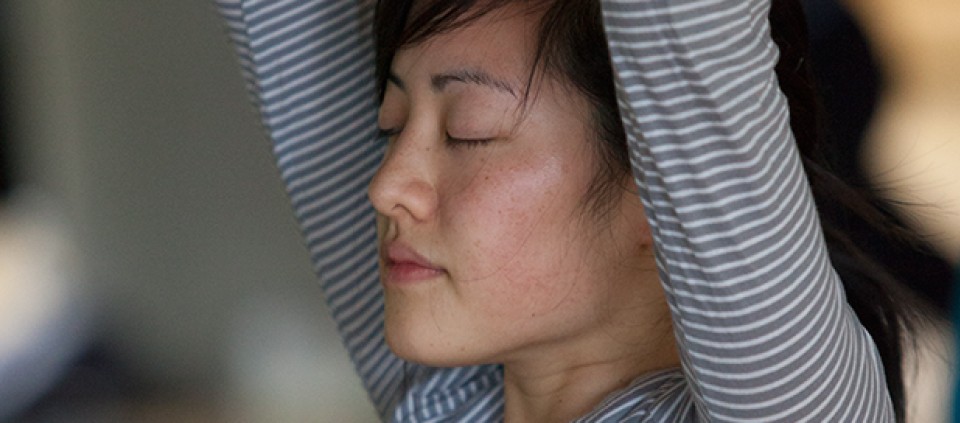Getting Back on the Mat After Injury

by Bess Hochstein
I used to be an Ashtanga warrior. It’s not for nothing that Beryl Bender Birch called her book on Ashtanga Power Yoga; during the heyday of my practice, I felt powerful and invincible every morning when I hit the mat. As someone who started yoga later in life, near 40, I recognized that there was a chance of injury if I pushed too hard, so I practiced with awareness and care. It was never easy for me, and I progressed slowly. After several years, I was happily beginning the second series of Ashtanga, having finally gotten to the point of dropping unassisted into backbends from standing.
Then I took a beginner’s trapeze workshop. My yoga practice gave me the strength and suppleness to get into some advanced positions as I swung through the air with the greatest of ease. It was thrilling, an adrenaline rush, and perhaps I didn’t pay enough attention to the strain it put on my very flexible shoulders…
Soon after, I attended a weekend yoga workshop that included a long session of backbending. The next day’s yoga practice was fine, but when I got home, I realized that something was terribly wrong. My shoulders were in severe pain, far beyond the normal soreness of having worked hard. Their range of motion was shot; I could not lift my arms above my head, nor out to the side. I had trouble lifting anything, even a full water bottle. My yoga practice was sidelined as I started intensive physical therapy.
For years afterward, I’d try to restart my practice, only to give it up in frustration when my shoulders started hurting as soon as I raised my arms to begin Sun Salutation. I tried modifications—knees to the mat in Plank, Cobra instead of Upward Dog, skipping the vinyasa transitions between asanas—but discouragement overcame me.
Years later, I landed in California, near a yoga studio with an experienced Ashtanga teacher certified in India by Sri K. Pattabhi Jois. Having let him know about my injuries, I laid out my mat. Paying close attention, I practiced slowly, gently, deliberately, going through only half of the primary series at first, until I built up the strength to practice the full primary series. It helped, mentally, that this teacher was a bit older than I am, and that he, too, had experienced injuries that limited his practice.
At this point, I’ve been practicing Ashtanga perhaps a decade longer than most of my classmates. Most are younger, slimmer, and bendier than I am, and they do asanas that I know I’ll never approach. I show up every day with no expectations, aware that my body and mind are in a different state than they were the day before, and that my practice will also be different as I adjust to those conditions.
Some days, I arrive fiery and strong; other days, I feel brittle and vulnerable. Regardless, every day I’m grateful to roll out my mat, to be part of a yoga community, and to have a teacher who knows how to meet each of his students wherever they are, without judgment.
I’m also grateful for a valuable learning experience. I’ve gained a greater understanding of the phrases that we often hear in yoga but sometimes let wash over us, phrases that have now become like mantras to me:
Just show up.
Bring your focus inside.
Yoga is not a race.
Let your breath guide your practice.
Practice is never a straight line.
Be compassionate with yourself.
The practice itself is the teacher.
It’s not about perfecting poses. It’s about finding equanimity.
Your practice is like a river; you can never step in the same river twice.
We are all beginners.
Bess Hochstein, a freelance writer based in Sonoma County, California, writes about yoga, travel, the arts, and culture.
© Kripalu Center for Yoga & Health. All rights reserved. To request permission to reprint, please e-mail editor@kripalu.org.